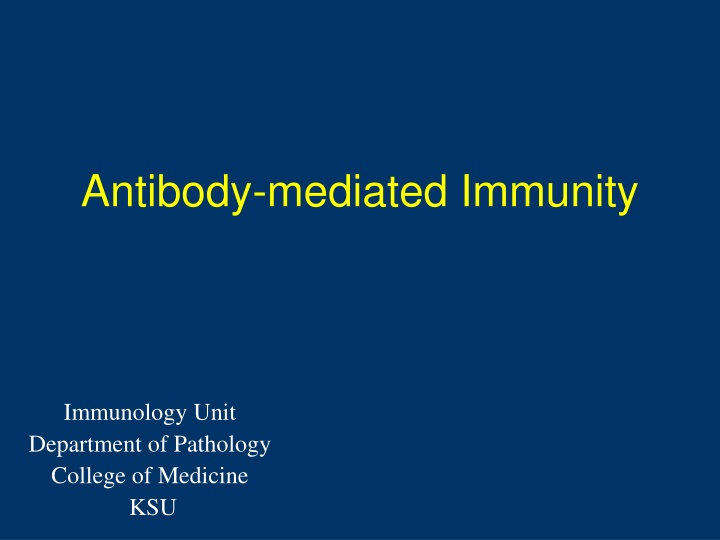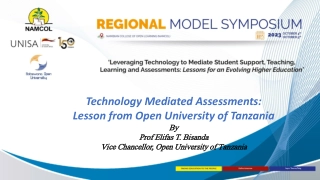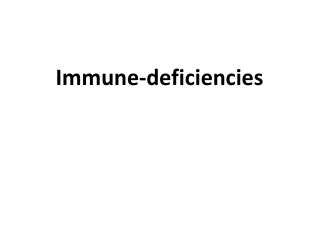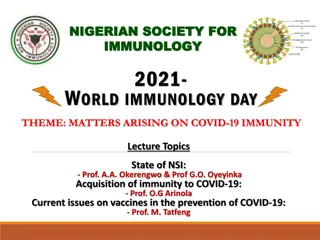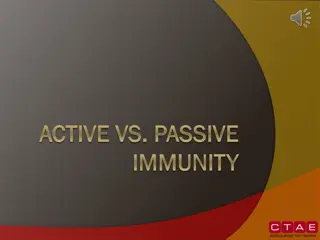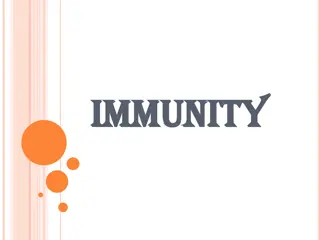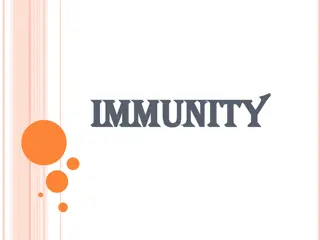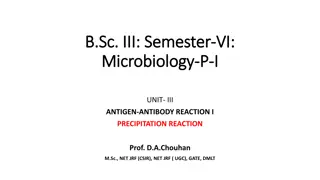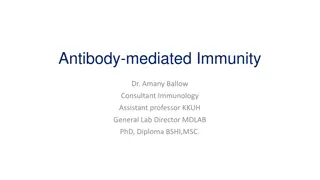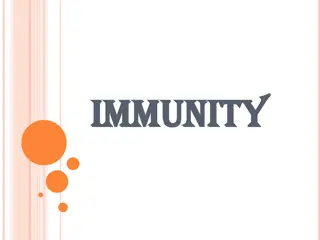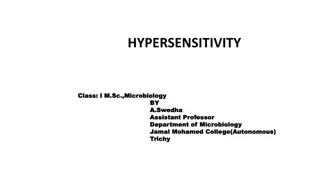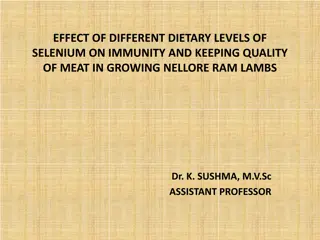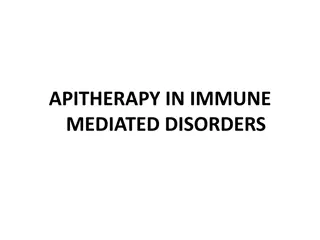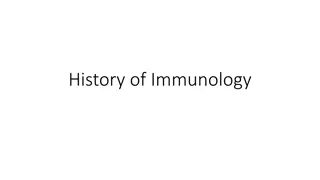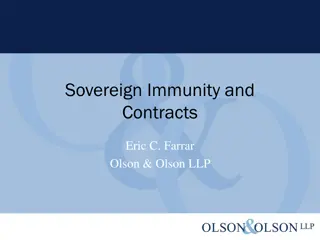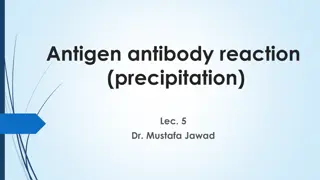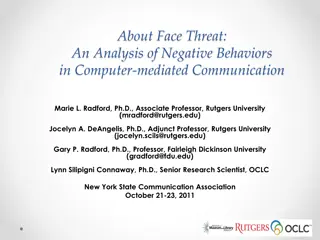Antibody-mediated Immunity
B-cells as mediators of humoral immunity, activation mechanisms, clonal selection, immune responses, and Ig structure and function. Understand the nature of antigens in immune responses.
Download Presentation

Please find below an Image/Link to download the presentation.
The content on the website is provided AS IS for your information and personal use only. It may not be sold, licensed, or shared on other websites without obtaining consent from the author.If you encounter any issues during the download, it is possible that the publisher has removed the file from their server.
You are allowed to download the files provided on this website for personal or commercial use, subject to the condition that they are used lawfully. All files are the property of their respective owners.
The content on the website is provided AS IS for your information and personal use only. It may not be sold, licensed, or shared on other websites without obtaining consent from the author.
E N D
Presentation Transcript
Antibody-mediated Immunity Immunology Unit Department of Pathology College of Medicine KSU
Reference Kuby Immunology 7th Edition 2013 Chapter 13 Pages 416-423 Chapter 3 Pages 80-90
Objectives 1. To describe B-cells as the mediators of humoral immunity, (antibody-mediated immunity) 2. To describe activation of B-cells which involve: -Antigen recognition -T-dependent & T-independent antigens - Requirement for T-helper cells 3. To explain clonal selection, clonal expansion & generation of plasma cells & memory cells 4. To describe primary & secondary immune responses 5. To describe the structure & function of Immunoglobulins
Humoral immunity is so named because it involves substances found in the: humours or body fluids The Humoral Immune Response is the aspect of immunity that is mediated by secreted antibodies
Nature of antigen determine type of response either EXTRACELLULAR or INTERACELLUALR
Activation of B cells by antigens Two types of antigens: 1. T-dependant : - Antibody production by B-cells require T- helper cells - Antigen presenting cells recognize antigen & present it to T-helper cells - T-helper cells stimulate B-cells specific for that antigen to become plasma cells - T-dependant antigens are mainly proteins on viruses, bacteria & other foreign materials.
Clonal Selection of B Cells is Caused by Antigenic Stimulation Clonal selection and clonal proliferation
2. T- independent antigens 1. B-cells do not require T-helper cells to produce antibody. 2. Antigens are mainly polysaccharides or lipopolysaccharides with repeating subunits (bacterial capsules). 3. Immune responses induce the production of IgM of low affinity for the antigen and no immunologic memory
Antibodies Antibodies are immunoglobulins with specific functions Antibodies bind to specific sites on antigen surfaces called (epitopes) and perform protective functions by different mechanisms There is a SPECIFIC antibody for any one given type of an antigen
Electron micrographs of the effect of antibodies and complement upon bacteria Antibody + complement-mediated damage to E. coli Healthy E. coli
Antibody structure and functions 1. Made up of four polypeptides chains 2. Two longer and larger (heavy chains ) and the other two shorter and smaller (light chains) 3. Have the shape of a letter Y
Variable region has the potential to bind with particular classes of antigens Once a raw antibody is stimulated to fit to a specific antigen, it can then react with ONLY that antigen This is known as SINGLE SPECIFICITY Can fit as precisely as a lock-and-key to an antigen
Functions of Antibodies Antibody dependent cell- mediated cytotoxicity Antibodies coat infecting cell (large parasite usually) - FC facing outwards NK (lysing ability), Macrophage, neutrophils, and eosinophils have receptors for FC region of antibody Secretion of lytic enzymes to destroy parasite
Functions of Antibodies Opsonisation and phagocytosis Antibodies coat infecting cells and facilitate their phocytosis by cells possessing Fc Receptors Complement activation classical pathway , after binding to antigen IgM+++, IgG1 > IgG3 > IgG2 Transplacental transfer IgG
Primary & Secondary immune responses Initial encounter with antigen produce primary immune response Subsequent challenge with same antigen produces secondary immune response
Concentration & type of antibody in primary & secondary immune responses
Comparison between primary & secondary responses
Take Home Message B cells can be activated by antigen to produce antibodies either with the assistance of helper T cells or directly by the antigen itself Antibodies are made up of two heavy and two light amino acid chains and have a shape of letter Y Different types of antibodies are located at various sites to provide protection by agglutination, precipitation, complement fixation etc. Secondary humoral immune response is swift and a stronger immune response mediated by IgG class of antibodies because of the memory cells.
